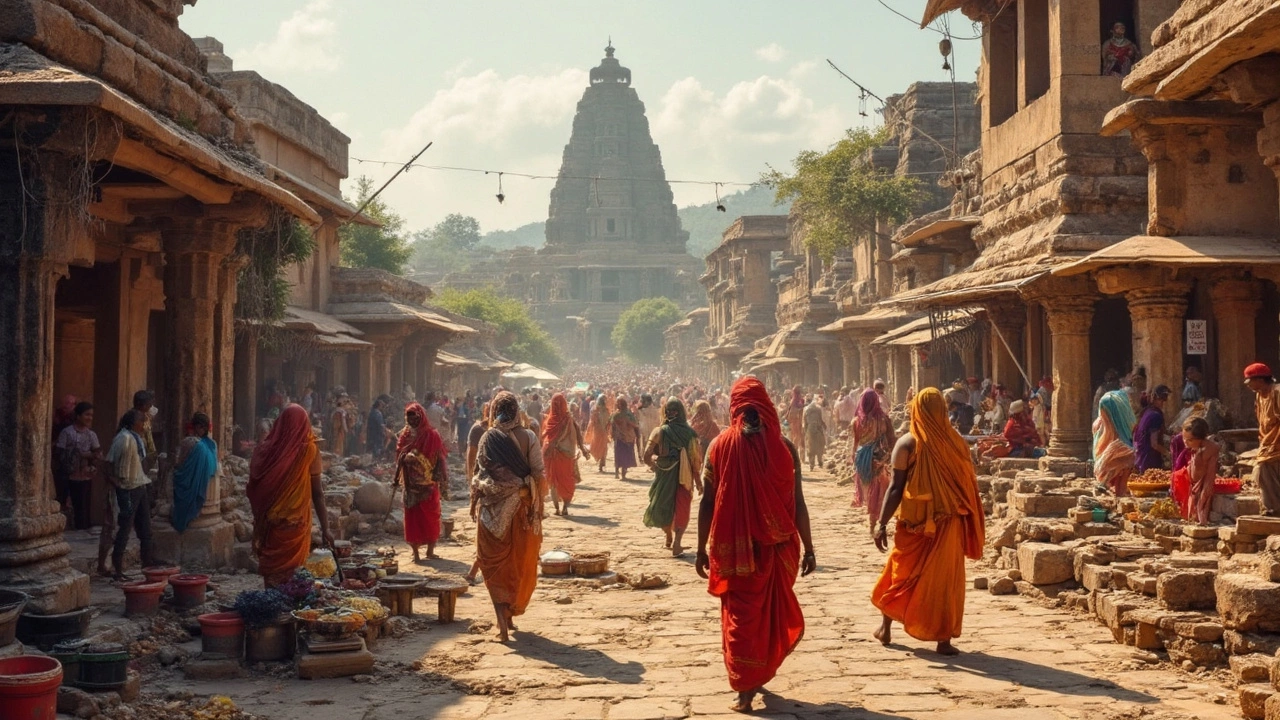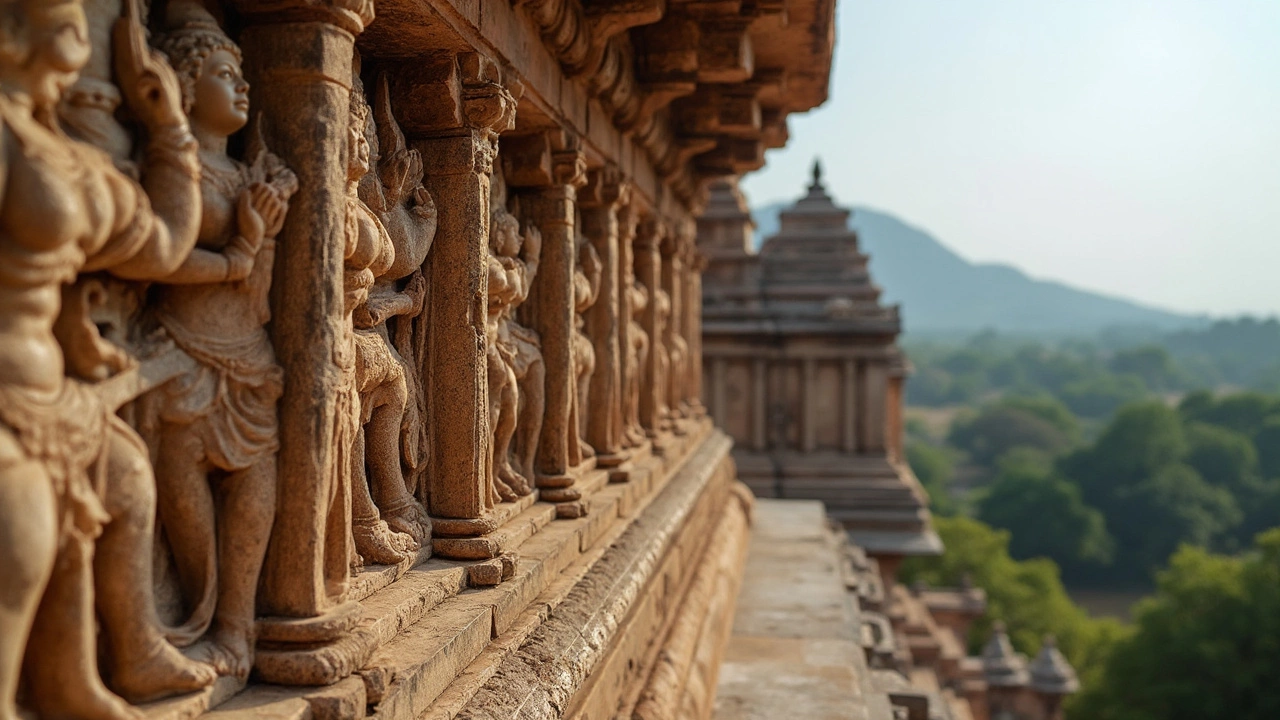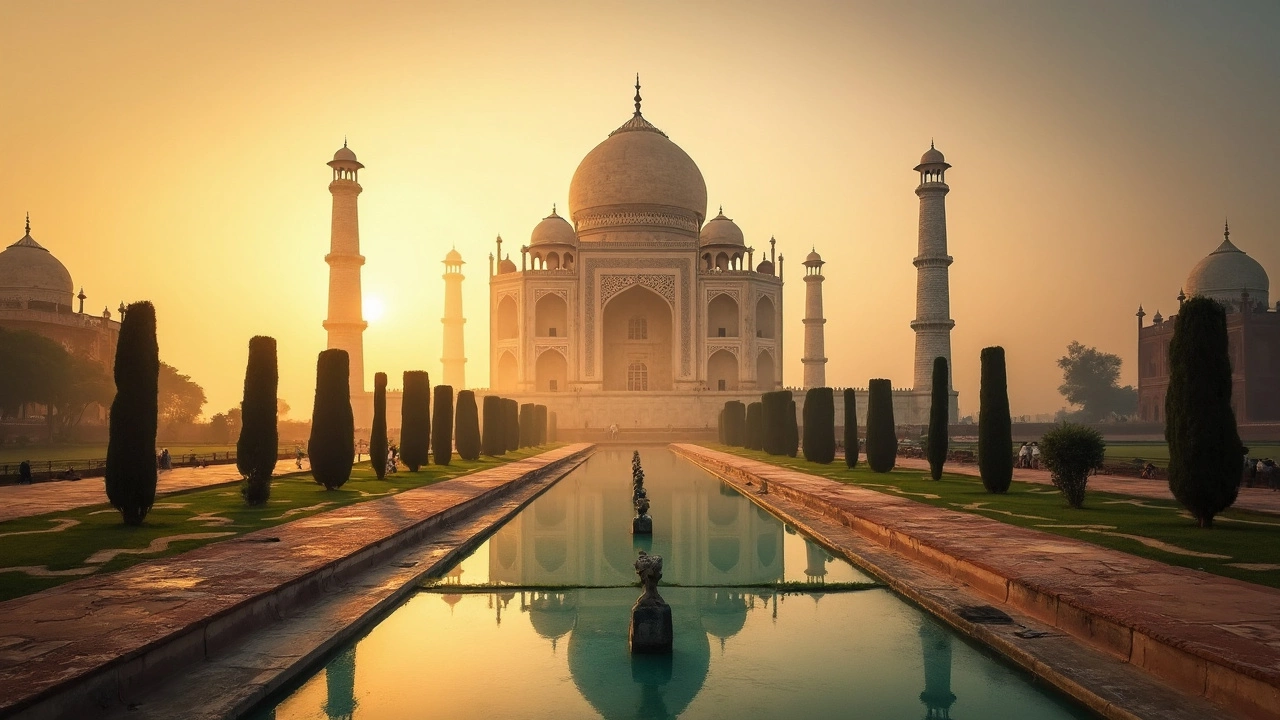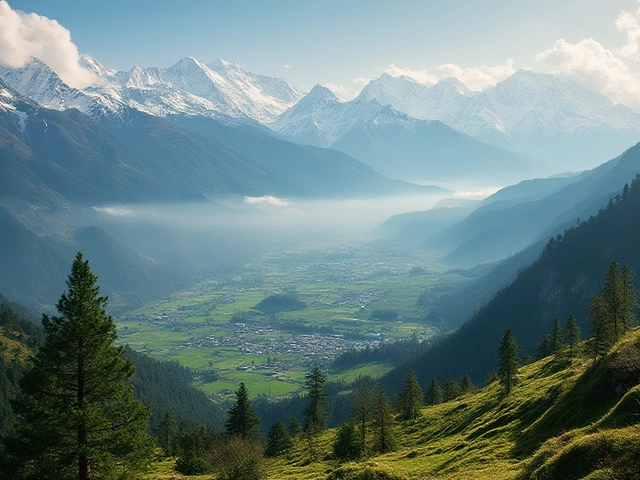When you think about India, places like the Taj Mahal or the sprawling forts of Rajasthan might spring to mind. These aren't just sites; they're dialogues with history—a time when emperors ruled and art and culture flourished. But did you know India boasts 40 UNESCO World Heritage Sites? That's right—a treasure trove of cultural and historical marvels awaits.
Take the Taj Mahal, a symbol of eternal love and Persian craftsmanship. It's more than just a beautiful tomb; it's a story millions cross continents to experience. Meanwhile, the red sandstone of the Agra Fort and the intricate designs of the Hawa Mahal offer glimpses into the architectural genius of past centuries.
India's ancient cities, like Hampi and Varanasi, hum with stories from their cobblestone lanes, where you can almost hear whispers of an era long gone. They provide more than just beautiful sceneries; they represent thriving centers of learning, commerce, and spiritual quest.
- Taj Mahal: An Icon of Love
- Majestic Forts and Palaces
- Ancient Cities Charmed with History
- Sacred Places and Pilgrimages
- Practical Tips for Visiting
Taj Mahal: An Icon of Love
The Taj Mahal isn't just another monument; it's a global symbol of love. Built in the 17th century by Emperor Shah Jahan for his beloved wife Mumtaz Mahal, this stunning white marble mausoleum is one of India's heritage sites that continues to draw countless visitors from around the world.
Architectural Marvel
Covering over 42 acres with its lush gardens and reflecting pools, the Taj Mahal's design is a masterpiece of Mughal architecture influenced by Persian styles. The main dome, which measures around 73 meters, laps up the sunlight to give off a serene glow. Intricately carved floral patterns, precious inlays, and calligraphy inscribed from the Quran adorn the surfaces, showcasing the artistry of that era.Construction and Workforce
It took a staggering 22 years and an estimated 20,000 workers to complete. Artisans from as far as Central Asia and Europe contributed to the construction, making it an international collaboration even back then. Fun fact: it used to have a gemstone-studded interior, many of which were later plundered.Environmental Conservation Efforts
Given its fame, the Taj Mahal has been at the center of various conservation efforts. Pollution and acid rain have been constant threats, prompting measures to protect its pristine beauty. The use of electric vehicles near the site is one step taken to minimize the damage.Visiting this iconic site is like stepping into a love story etched into history. Its timeless beauty continues to captivate hearts, making it a must-visit for anyone exploring famous Indian sites.
| Year | Event |
|---|---|
| 1632 | Construction began |
| 1648 | Main building completed |
| 1983 | Designated a UNESCO World Heritage Site |
Majestic Forts and Palaces
India is a land where history is not just read about, it's lived in. The famous Indian forts and palaces come in all shapes and sizes, from sprawling complexes designed to hold off entire armies to exquisite palaces built for royal leisure.
Jaipur's Amber Fort
Let's start with the Amber Fort in Jaipur. Built in the late 16th century by Raja Man Singh, this fort combines massive battlements with intricate designs. As you walk through its halls, the mirror work and frescoes will stop you in your tracks. It's not just a structure; it's a former powerhouse of the region where strategy and luxury coexisted.
The Splendor of Udaipur's City Palace
Move a bit south, and you encounter Udaipur's City Palace. Perched on the banks of Lake Pichola, it's a breathtaking blend of Mughal and Rajasthani architecture. Inside, you'll find ornate chambers, courtyards, and museums packed with paintings, artifacts, and armory belonging to the Mewar royalty. The sheer scale and artistry make it a must-visit.
Rajasthan's Mehrangarh Fort
Heading further to the blue city of Jodhpur, the Mehrangarh Fort stands imposing, as though time itself paused in its shadows. Constructed around 1459 by Rao Jodha, it climbs a staggering 400 feet above the city. Magnificent palaces like the Flower Palace and Mirror Palace within the fort tell endless stories of pomp and splendor. Don't miss the view from the ramparts for an unforgettable panorama of the city.
- Agra Fort: Near the Taj Mahal, the Agra Fort is an enduring symbol of the Mughal's might, a UNESCO World Heritage Site that shouldn't be skipped.
- Mysore Palace: In Karnataka, this palace, illuminated with tens of thousands of lights, looks like a fairytale during the Dussehra festival.
- Golconda Fort: In Hyderabad, it's famous for its military architecture and acoustics that could put modern buildings to shame.
All these majestic forts and palaces show how the past was lived and fought over. They stand as time machines, whisking visitors to eras where India was a cultural powerhouse. And the best part? They're just waiting for you to explore.

Ancient Cities Charmed with History
Think of ancient cities in India as living museums, where the past meets the present in the most vibrant way. When you're exploring these places, it feels like traveling back in time, doesn't it? Every corner has a story.
Hampi: Echoes of a Lost Empire
Hampi, a UNESCO World Heritage Site, is like an open-air gallery of stunning architecture. Once the capital of the Vijayanagara Empire, it showcases a mix of Hindu and Islamic influences. While walking among its ruins, you might imagine elephants ambling down stone roads or markets buzzing with activity as they once did.
What makes Hampi unique is the landscape—boulder-strewn hills and serene rivers as far as the eye can see. Key sights include the Virupaksha Temple, which isn't just a photographer's dream but also a testament to centuries-old craftsmanship.
Varanasi: The Spiritual Capital
Varanasi, also known as Banaras or Kashi, is arguably the heartbeat of spiritual India. With its holy ghats and the River Ganges flowing alongside, it's a place many come to seek peace or religious solace. Pilgrims bathing on the ghats, accompanied by the sound of prayers and temple bells, paint a picture of devotion that's hard to forget.
Historical records suggest Varanasi is over 3,000 years old, making it one of the world's oldest continuously inhabited cities. The layers of history in the narrow alleys and ancient temples reflect India's rich religious tapestry.
Madurai: The Athens of the East
Madurai in Tamil Nadu boasts the iconic Meenakshi Amman Temple, a marvel of Dravidian architecture. With its towering gopurams adorned with thousands of sculptures, it's a site that's bound to impress. This city was a major cultural and trade hub as far back as 550 AD.
The streets of Madurai are constantly alive, with bustling markets humming with activity—a fusion of the ancient and the alive. Walking these streets feels like stepping into a story from the ancient Sangam period.
Each of these cities holds a piece of India's past like a cherished memory, and visiting them isn't just about sightseeing; it's about immersing yourself in stories that shaped the nation.
Sacred Places and Pilgrimages
India is a land where spiritual pursuits and heritage go hand in hand. A journey through its sacred places and pilgrimages is not just a travel itinerary but a soulful exploration. A quintessential part of discovering India's heritage sites involves delving into its immensely revered spiritual landmarks.
Varanasi: The Spiritual Capital
Considered the oldest living city, Varanasi is a must-visit for those seeking spiritual awakening. Dawn boat rides on the Ganges River, across the sacred ghats, reveal the timeless connection people share with this holy river. The aura during the evening Ganga Aarti is an experience you won't forget.
Amritsar and the Golden Temple
Home to the stunning Golden Temple, Amritsar offers more than just a visual treat. Embrace the spirituality as you walk through the Harmandir Sahib, where the sense of peace is palpable. Visitors also enjoy the langar, a community-run kitchen, offering free meals to thousands daily—an embodiment of the spirit of service and equality.
Rishikesh and Haridwar
These neighboring towns are known as gateways to the Himalayas and important pilgrimage centers. Rishikesh, the Yoga Capital of the World, has a serene environment that's perfect for meditation and learning. Haridwar, meanwhile, attracts thousands during the Kumbh Mela—an event so massive and significant it's also acknowledged in the UNESCO list for the Intangible Cultural Heritage of Humanity.
Char Dham: The Pilgrim's Journey
Many Hindus aspire to complete the Char Dham Yatra—a pilgrimage to Badrinath, Dwarka, Puri, and Rameshwaram in four corners of the country. Completing this journey is believed to purify one's soul and bring liberation. These sites offer not only spiritual fulfillment but also reflect the rich tapestry of India's cultural heritage.
For those planning to tour these sacred places, it's often advised to respect local customs, dress appropriately, and participate in traditional rituals to enhance your understanding of their significance. By exploring these sacred sites, travelers gain a deeper appreciation of the diverse spiritual practices that contribute to India's world heritage.

Practical Tips for Visiting
Planning a trip to explore India's heritage sites can be overwhelming, but with a few practical tips, it becomes more manageable and a lot more fun. Here’s what you need to know before setting out on your adventure.
Time It Right
The best time to visit many of the famous Indian sites is during the cooler months between October and March. During this period, the weather is friendlier, making it perfect for long days of sightseeing.
Travel Smart
India boasts a vast network of trains, so taking a train ride can be both a practical and immersive experience. Book your tickets in advance, especially for long-distance trips, to ensure a hassle-free journey. Ride-sharing apps are also popular in most major cities for shorter distances and quick trips.
Dress Appropriately
Visitors should dress modestly when exploring sacred and historical sites. Wearing light, breathable clothing is advisable as it keeps you comfortable during long hours outdoors. Don't forget to pack a scarf or shawl for visiting temples or mosques, where covering your head might be required.
Entry Fees and Passes
Most sites charge an entry fee, which varies for Indian citizens and international visitors. Consider purchasing a day pass or a multi-site ticket, available in certain cities, to save money while visiting multiple attractions.
Stay Hydrated and Nourished
Exploring these sites can be taxing, so remember to carry water and snacks. While street food is tempting, approach it with caution if you've got a sensitive stomach. Instead, enjoy local cuisine at reputable eateries for a taste of India's rich culinary heritage.
Secure Your Belongings
Keep an eye on your belongings, as crowded tourist areas are hotspots for pickpocketing. A reliable travel bag with locks or a money belt can be handy for keeping your essentials safe.
Follow these tips, and your journey through India's captivating world heritage sites will be both enriching and enjoyable. Prepare well, stay curious, and don't forget that discovering India's past is a journey worth every bit of effort.



